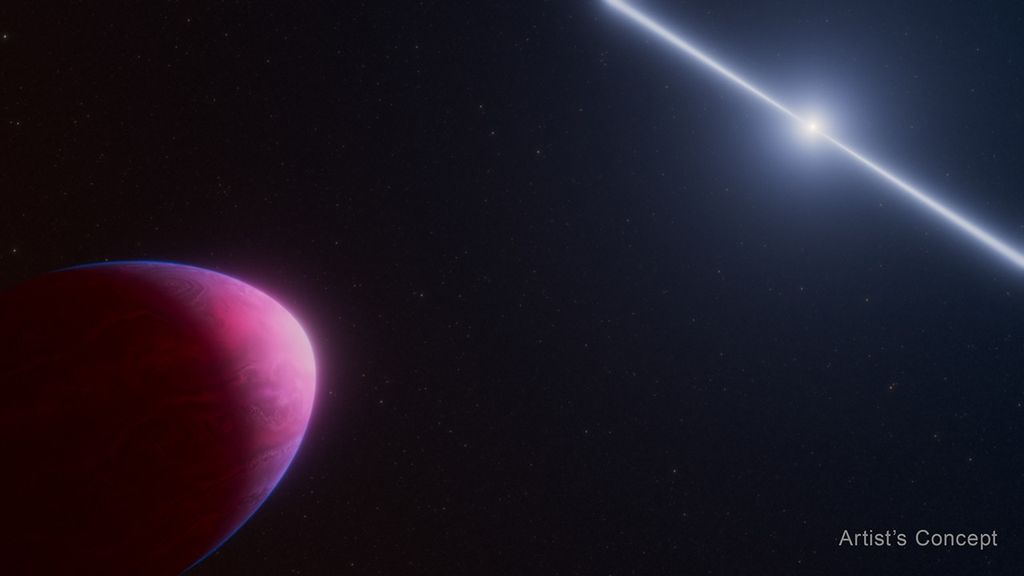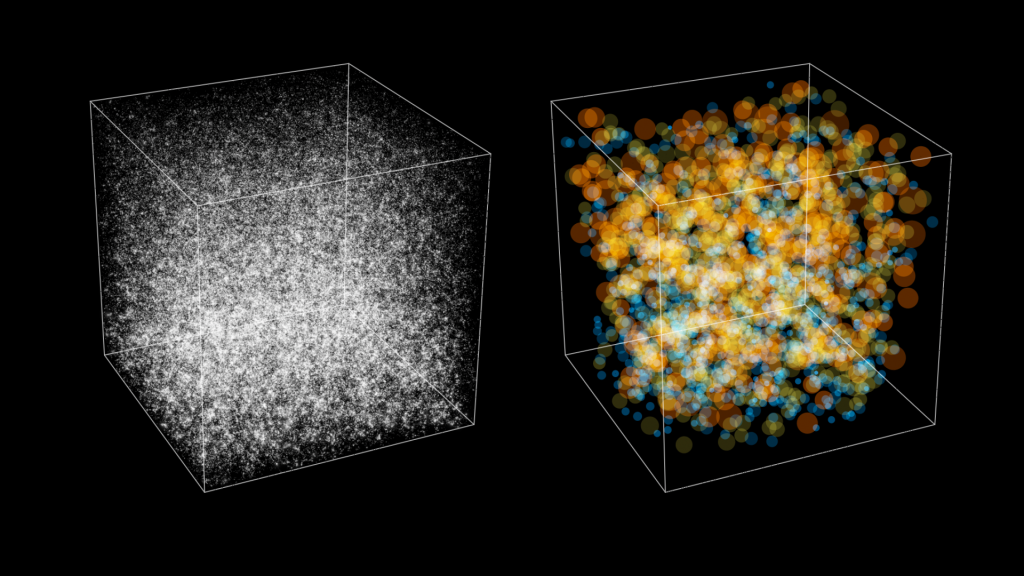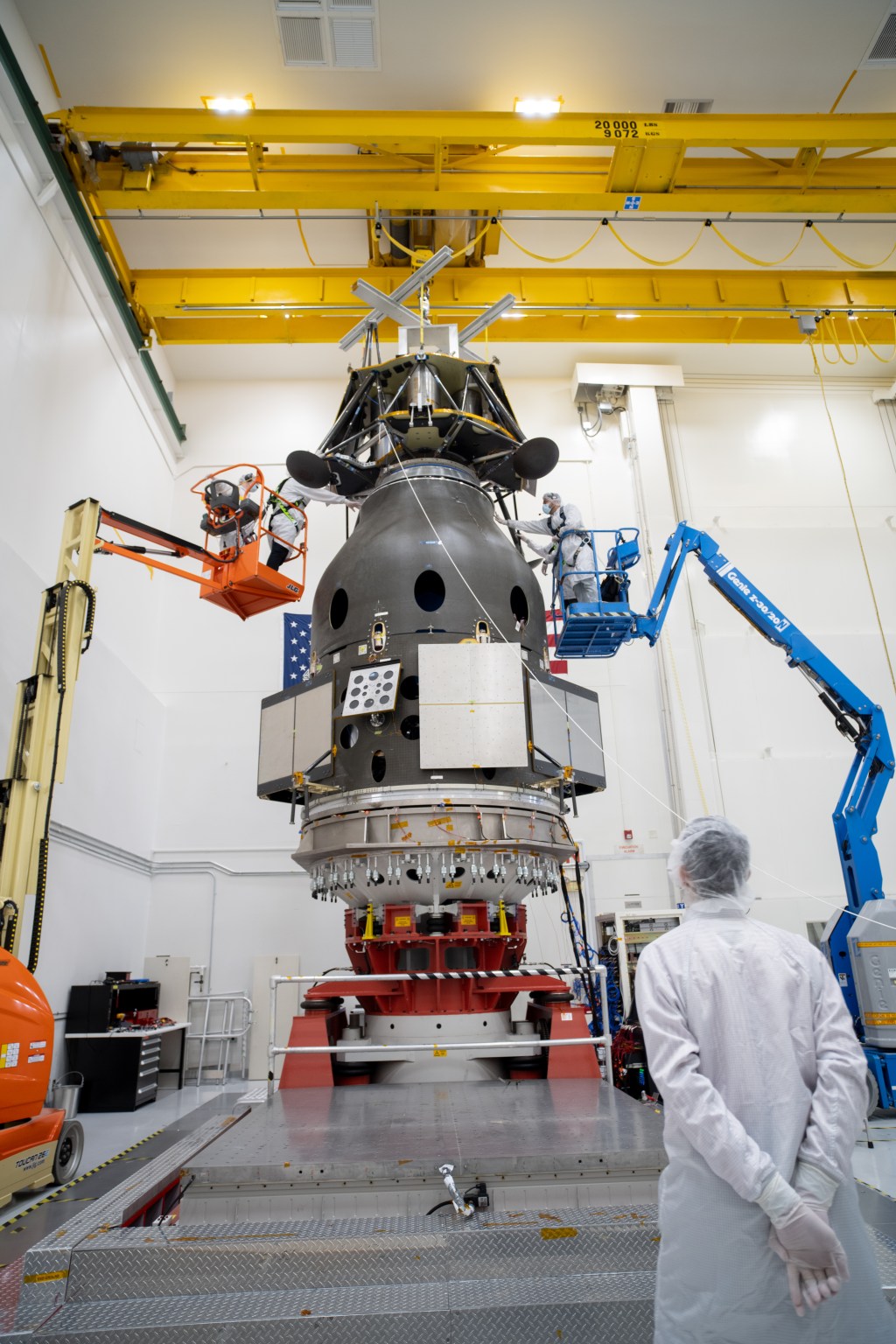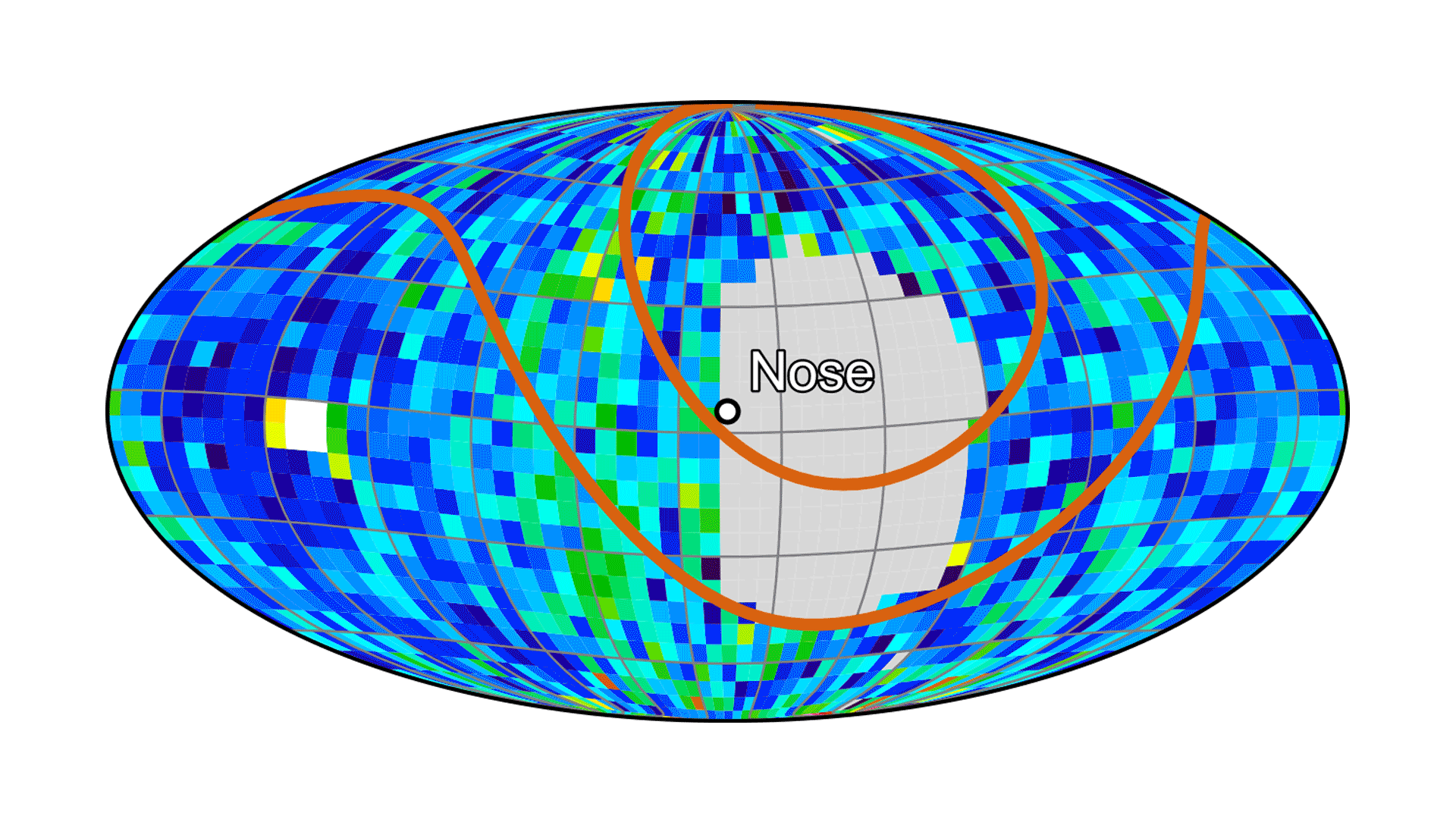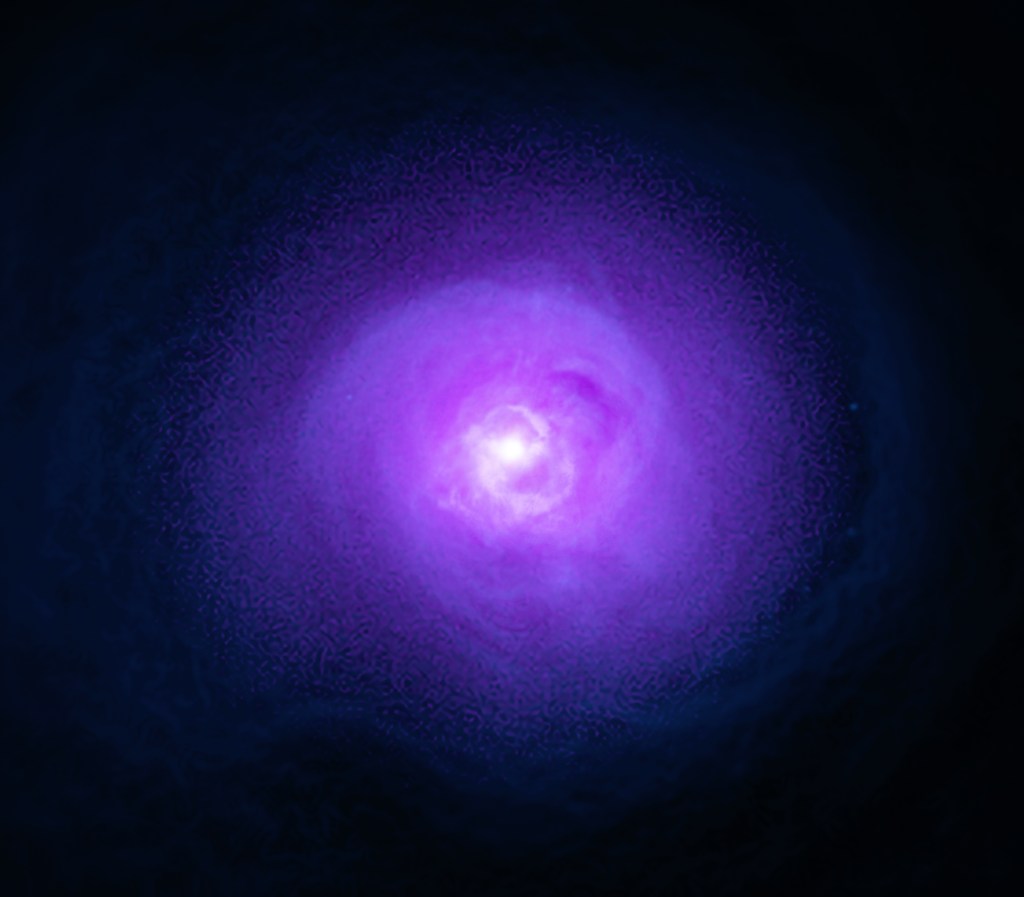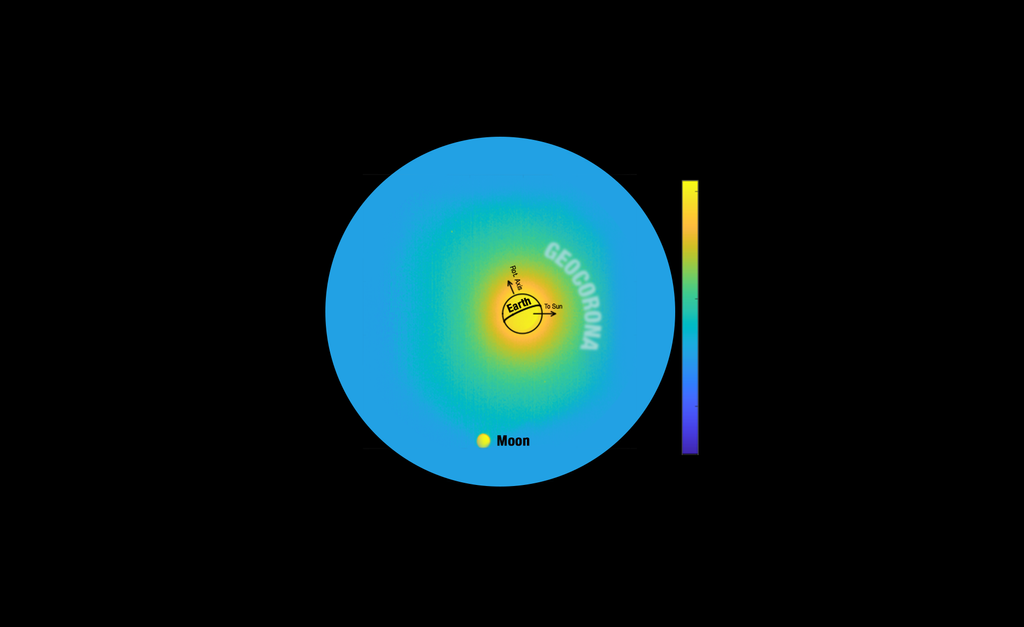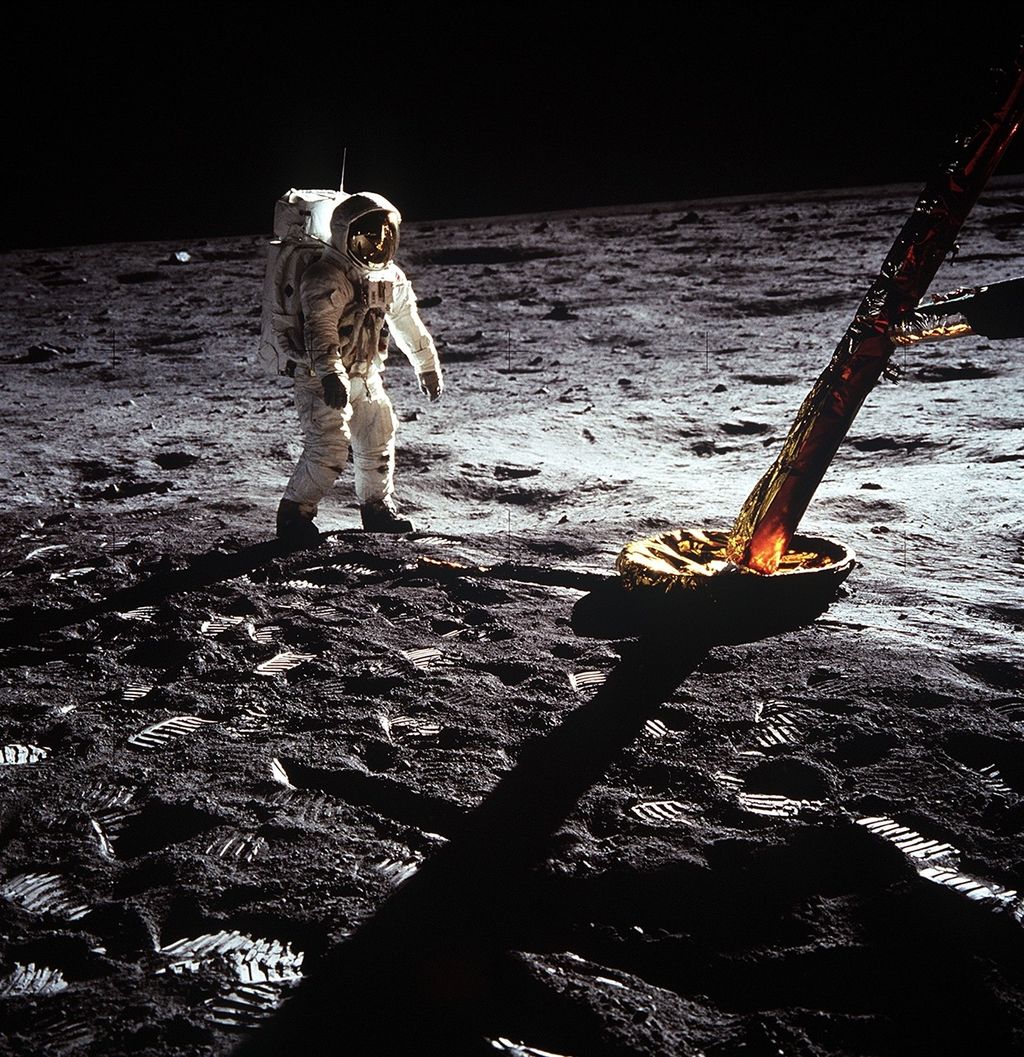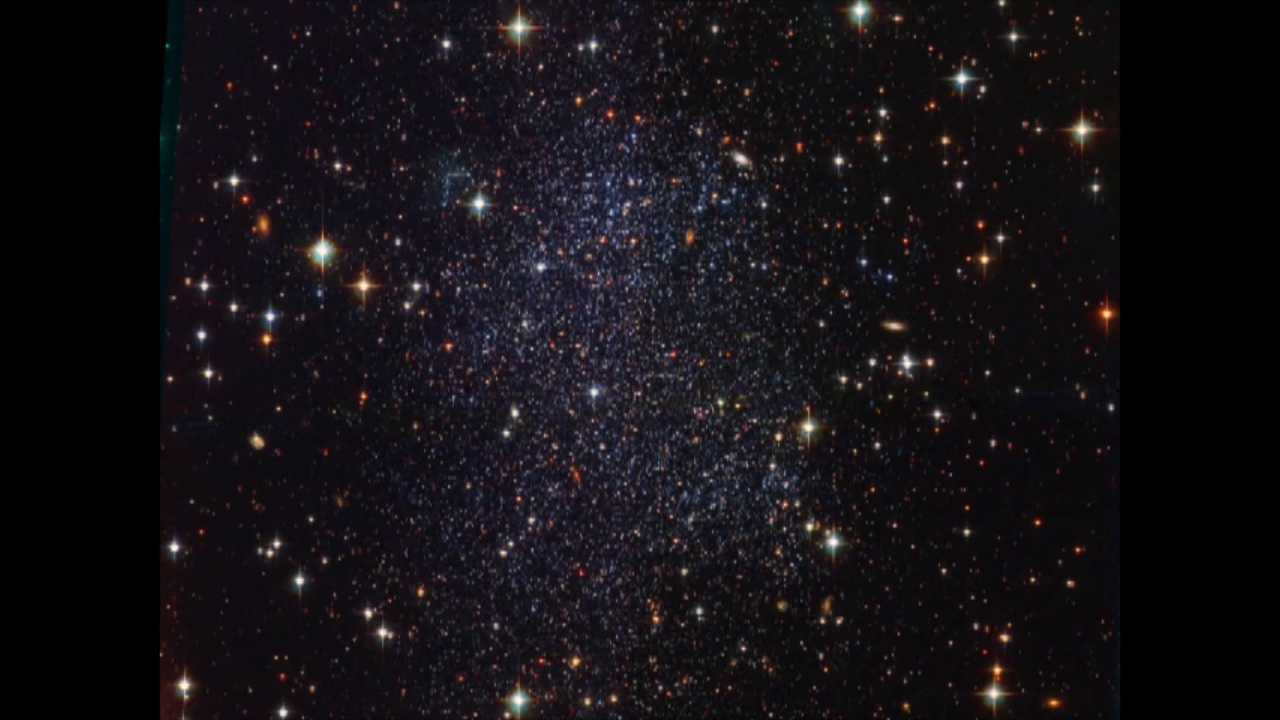1 min read
Sagittarius Dwarf Galaxy

This new image from the Hubble Space Telescope shows a small galaxy called the Sagittarius dwarf irregular galaxy, or "SagDIG" for short. SagDIG is relatively nearby, and Hubble's sharp vision is able to reveal many thousands of individual stars within the galaxy.
The brightest stars in the picture (easily distinguished by the spikes radiating from their images, produced by optical effects within the telescope), are foreground stars lying within our own Milky Way galaxy. Their distances from Earth are typically a few thousand light-years. By contrast, the numerous faint, bluish stars belong to SagDIG, which lies some 3.5 million light-years (1.1 Megaparsecs) from us. Lastly, background galaxies (reddish/brown extended objects with spiral arms and halos) are located even further beyond SagDIG at several tens of millions parsecs away.
As their name implies, dwarf irregular galaxies are unlike their spiral and elliptical cousins, because of their much smaller physical size and lack of definite structure. Using Hubble, astronomers are able to resolve dwarf irregular galaxies that are at very large distances from Earth, into individual stars. By examining properties of the galaxy, such as distance, age and chemical composition, the star formation history of the whole galaxy is better understood, and reveals how, where, and when active star formation took place.
The main body of SagDIG shows a number of star-forming complexes that cover an appreciable fraction of the galaxy surface area. The presence of on-going star formation in a gas-rich galaxy such as this makes SagDIG an excellent laboratory where scientists can test present-day theories of what triggers star-formation in galaxies (without companions) and how this propagates throughout the galaxy.
About the Object
- R.A. PositionR.A. PositionRight ascension – analogous to longitude – is one component of an object's position.19h 29m 58.99s
- Dec. PositionDec. PositionDeclination – analogous to latitude – is one component of an object's position.-17° 40' 41.0"
- ConstellationConstellationOne of 88 recognized regions of the celestial sphere in which the object appears.Sagittarius
- DistanceDistanceThe physical distance from Earth to the astronomical object. Distances within our solar system are usually measured in Astronomical Units (AU). Distances between stars are usually measured in light-years. Interstellar distances can also be measured in parsecs.3.5 million light-years (1.1 Megaparsecs)
About the Data
- Data DescriptionData DescriptionProposal: A description of the observations, their scientific justification, and the links to the data available in the science archive.
Science Team: The astronomers who planned the observations and analyzed the data. "PI" refers to the Principal Investigator.The Hubble image was created from HST data from proposal 9820: Y. Momany and L. Bedin (Univ. of Padua), E. Held (Astr. Obs. of Padua), K. Kuijken (Univ. of Leiden), R. Rich (UCLA), L. Rizzi (Univ. of Padua), and I. Saviane (ESO – Chile). The science team involved with the asteroid is: S. Marchi, Y. Momany, and L. Bedin (Univ. of Padua). - InstrumentInstrumentThe science instrument used to produce the data.HST>ACS/WFC
- Exposure DatesExposure DatesThe date(s) that the telescope made its observations and the total exposure time.August 18, 2003
- FiltersFiltersThe camera filters that were used in the science observations.F435W (B), F606W (V), F814W (I)
- Object NameObject NameA name or catalog number that astronomers use to identify an astronomical object.Sagittarius Dwarf Irregular Galaxy, SagDIG, ESO 594-4
- Object DescriptionObject DescriptionThe type of astronomical object.Dwarf Irregular Galaxy
- Release DateNovember 11, 2004
- Science ReleaseHubble Tracks Asteroid’s Sky Trek
- CreditNASA, ESA, and The Hubble Heritage Team (STScI/AURA); Acknowledgment: Y. Momany (University of Padua)

Blue: F435W (B) Green: F606W (V) Red: F814W (I)
Related Images & Videos

Reddish Arcs Mark Trail of Small Asteroid
While analyzing NASA Hubble Space Telescope images of the Sagittarius dwarf irregular galaxy (SagDIG), an international team of astronomers led by Simone Marchi, Yazan Momany, and Luigi Bedin were surprised to see the trail of a faint asteroid that had drifted across the field...
Share
Details
Claire Andreoli
NASA’s Goddard Space Flight Center
Greenbelt, Maryland
claire.andreoli@nasa.gov


